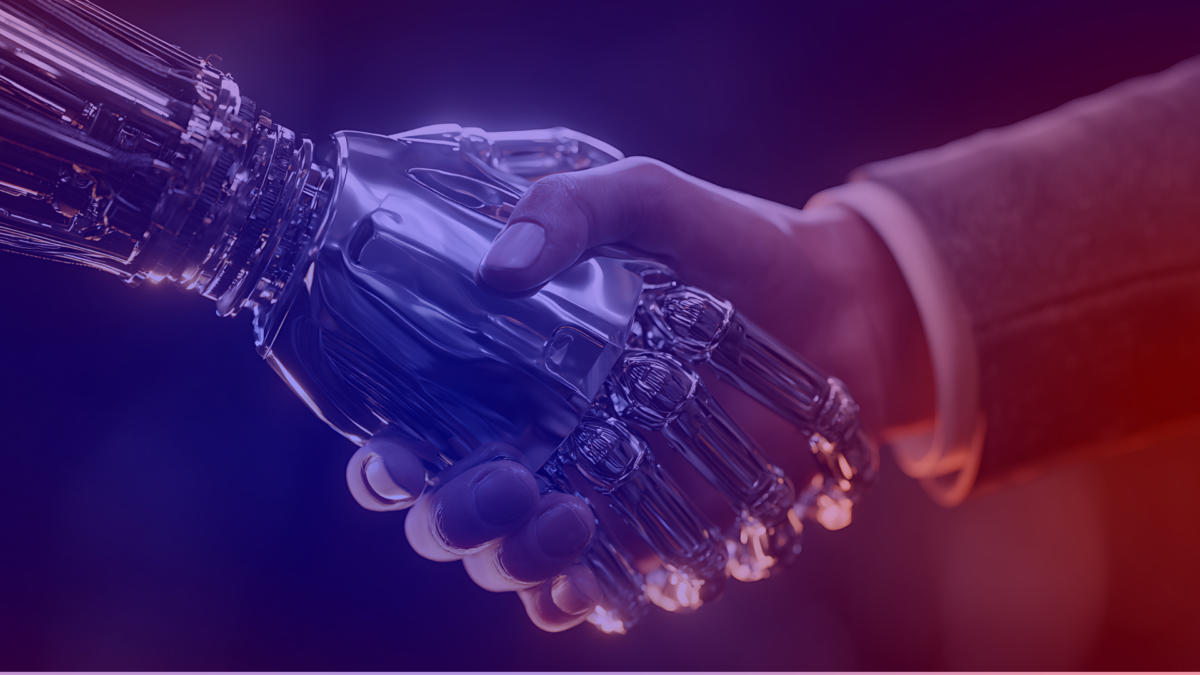AI in 2026: Your Marketing Team’s Turbo Boost
AI in 2026 won’t be a novelty act any longer. When its utility for marketing tasks was explored at DMEXCO 2025, the focus had shifted from “Can AI do that?” to “Where does AI save time, boost quality and tangibly improve the customer journey?”

DMEXCO 2025: key AI takeaways
Discussions about AI at DMEXCO 2025 were far more concrete than in previous years. We saw clear examples of where artificial intelligence is already being used as a matter of course in marketing: in ideation, testing, campaign management and customer service processes. Wherever clean data, clear goals and fixed workflows are present, AI is making everyday work a great deal easier. In 2026, AI support will become routine. No longer a gimmick, artificial intelligence has become part of the standard tool kit.
Four areas that will genuinely benefit from AI in 2026
#1 Observing user behavior with AI
The importance of cookies is declining, shifting direct logins and user consent to the forefront. AI systems like Google Data Manager constantly monitor user behavior in the form of consent signals, page interactions and similar activities, then use this information to continually define segments. Instead of exporting audience lists once a quarter, these tools create profiles dynamically, based on behavior and interest. This reduces media wastage and makes messages more relevant.
How to put it into practice: Simplify consent flows, maintain consistent identities across touchpoints and map out a clear path to the clean room. Then start small tests, such as two different creatives on two segments, define clear metrics and document the results.
#2 AI asset creation accelerates the creative process
AIs such as DALL-E provide support in the early stages of various creative processes involved in content marketing. From a short brief, these models can generate headline suggestions, ideas for hooks and image options. Rather than providing the core idea itself, this process fills the blank page. In 2026, marketing teams will be able to work with various options instead of starting from scratch. In the review stage, models like ChatGPT can assist with proofreading and style checks.
How to put it into practice: Create a concise template for your briefs and specify the desired tone and any no-gos. Develop a small library of prompts and test them in sprints. Humans still have the final say, but artificial intelligence gives your creative team input.
#3 Personalized customer journeys
Instead of running campaigns inflexibly across channels, models like TheyDo learn which next action makes sense in the customer journey, tailored directly to the behavior of the individual user. Discount or content? Email or app push notification? Call from customer services or give the user space? Artificial intelligence evaluates signals from CRM systems and web behavior to suggest the appropriate action. This reduces friction and increases conversion.
How to put it into practice: Start with a simple next-best-action (NBA) model like Salesforce Einstein with a small number of features, such as order history and last contact. Define rules for when no interventions should be made. Measure success not only in clicks, but also in terms of the desired goal, such as a booking, subscription or repeat purchase.
#4 Customer service and content assistant
Users often repeat the same questions. AI assistants like HubSpot’s chatbot software answer standard queries about orders, products or invoices. In addition, models like ClickUp suggest FAQs and links to sources. This saves customer services team members time searching for information and allows them to focus on cases that require a more sensitive, human touch.
How to put it into practice: Collect frequently asked questions (either yourself or via your chosen AI agent), grant access to agents and feed them brief examples of your brand voice. Use examples to train responses and define a clear escalation process. And of course, perform regular quality checks.
Introducing AI to workflows: What marketing teams should be doing to prepare for 2026 now
- Manage your data carefully: Be sure to keep accurate, up-to-date records of consent and identities, and avoid duplication. Maintaining clean data will save you time and money correcting errors later.
- Define your processes: Determine the specific steps in which artificial intelligence can support you. Outline the individual stages – from briefing to drafting and review to execution and evaluation.
- Design small experiments: Run tests with two hypotheses that you check within a specified period of time. Choose a clear metric for measuring performance. When the testing period is over, decide whether to continue or abandon the experiment.
- Assign clear roles: Clarify which team member will check the facts, which will approve texts and which will measure the outcomes. Keep approvals short and precise for an efficient process.
- Document: Make a note of the things that worked well and those that didn’t in your application of artificial intelligence. Three short sentences are enough to highlight the lessons learned and ensure they can be repeated.
Clear guardrails and responsible practices
- Transparency: Keep a record of the content you have generated yourself (for internal reference). Follow the client’s guidelines.
- Data protection: Only work on the basis of consent, exclude sensitive fields and log access. Use clean rooms when processing data from partners.
- Check for bias: Carry out random checks and train your AI on a range of examples.
- Copyright: Check/obtain authorizations, respect brand style and document approvals.
- Security: Do not enter sensitive data into open models. Check your inputs and outputs.
- Human in the lead: Ask the AI to generate suggestions, but make final decisions yourself. This boosts quality and builds trust.
Takeaway: practical application over hype
In 2026, AI will be at its most effective when it’s part of a clear workflow. Where asset creation is concerned, AI systems such as DALL-E will take the first steps and accelerate your creative process. When it comes to supporting campaign management, tools like Google Data Manager will help to define segments and tailor creative elements. In the customer journey, programs like Salesforce Einstein will suggest the next logical action. And in customer services, AI agents will answer recurring questions and free up time for complicated cases that require more attention. None of this is magic – it’s just disciplined practical application.
“Artificial intelligence is developing rapidly and changing how we live and work. To ensure that AI remains not only efficient but also human-centered, we need ethical guardrails that reflect our European values and provide guidance. If companies take these into account from the outset in their development and use of AI, they will create a robust and trustworthy framework for our digital future.”
Maike Scholz (Deutsche Telekom AG), Deputy Chair of the Digital Responsibility working group at the German Association for the Digital Economy (BVDW)

Those who embrace this ethos will use AI both efficiently and responsibly. In 2026, the most successful marketing teams will be those that combine discipline, data and values.
Don’t miss any important news from the world of digital marketing, both nationally and internationally! Subscribe to the new DMEXCO newsletter “Digital Digest” and receive the latest information directly in your mailbox every Monday, Wednesday, and Friday.






